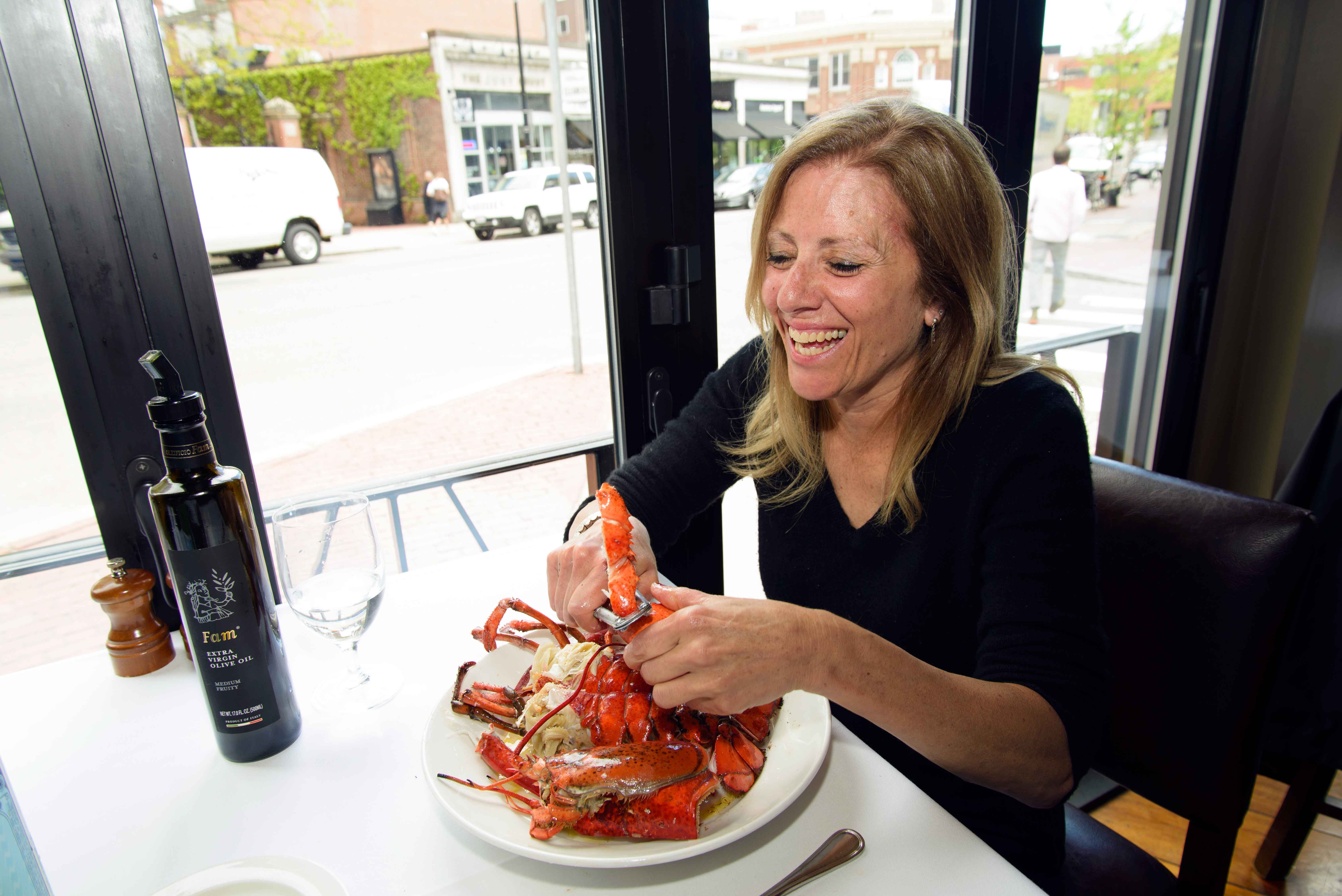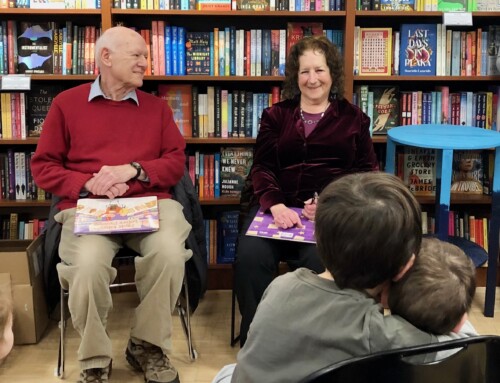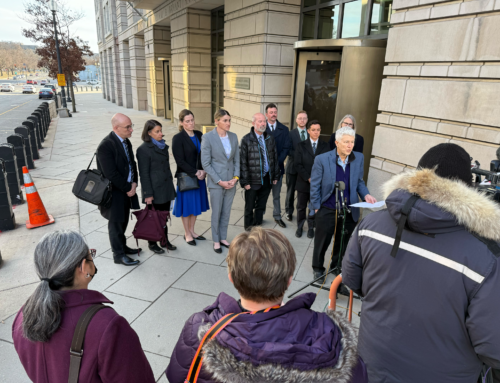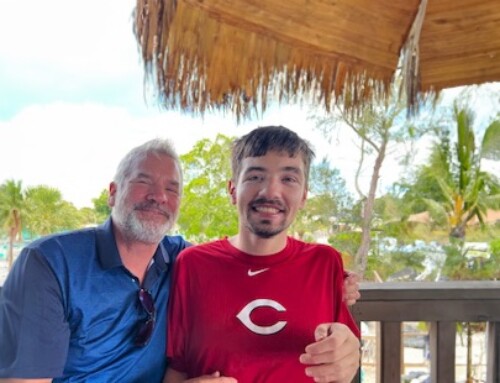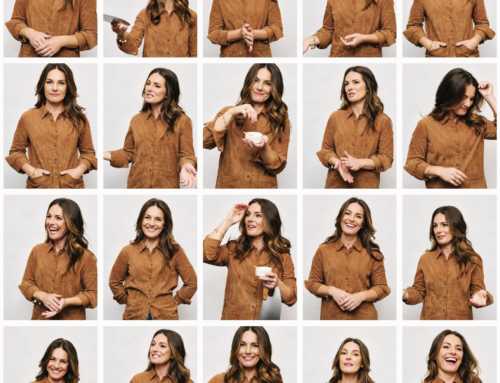Interview By Nina Livingstone
This piece about chef Barbara Lynch was originally published in June in Portland Magazine’s Summer Guide 2017. I had the opportunity and privilege to interview Barbara during her whirlwind book tour just after she was named as one of Time Magazine’s 100 Most Influential People.
World-renowned chef Barbara Lynch’s latest achievement among many was to be named among Time magazine’s “Top 100 Most Influential People of the Year” in recent weeks, making it clear this South Boston native has more than a simple story to share.
As Lynch tours the East Coast doing readings and signings of her just-released memoir, Out of Line: A Life of Playing with Fire, she’s opened up her private life for public scrutiny. As a blind journalist, I listened to her book and felt there were still areas to explore, so I made arrangements to meet with her in person.
At Home With Lynch
Barbara Lynch has invited me to her Massachusetts home on a Saturday in early summertime. It’s a beautiful, sunny day, and we sit at a table on a porch adjacent to her kitchen. We’re joined at the table by Charlie Petri, whom she married in 1997 (they are currently separated) and their daughter, Marchesa, who was born in 2004.
Because I’m blind and hard of hearing, the details of my surroundings are absent until Marchesa introduces me to her dog and then begins describing the yard in vivid detail–giving special mention to her trampoline–granting me a cool sense of sight.
This and the positive energy felt from around the table ease my pre-interview anxieties, born from the fact that my knowledge of food is limited and how my lack of sight can make me feel awkward.
Fortunately all present extend themselves, quickly establishing a comfortable rapport with me as we embark on Lynch’s stories of her career, Camden, and cooking for the Kennedys.
The Maine Connection
Maine has played a role in Lynch’s life throughout her starry professional career. When I ask her about her connection to the state, Camden crops up first. “I’m doing a dinner at the Camden [Harbour] Inn in the fall. I was supposed to do one in June, but it conflicted with an event held by another restaurant up in Rockport called Nina June.”
Nina June is one of three restaurants owned by Sara Jenkins, a close friend of Lynch’s who joined Lynch on her first trip to Tuscany.
“I went for two weeks with Sara to her parents’ holiday home. I went back a month later and cooked for her wedding,” Lynch says.
With Nina June being Jenkins’s first restaurant in Maine (her two others are in New York City: Porsena and Porchetta), Lynch told me she didn’t want to infringe on Jenkins’s event. “So we decided to just do Camden in the fall,” she says.
On its website, the Camden Harbour Inn describes Lynch’s dinner as a “one-time only event in honor of her new book Out of Line.”
But it’s Lynch’s longstanding fondness for Portland that prompts her to dub it “a great city” based on connections stretching from videos she’s done for Jay Loring’s popular Congress Street eatery, Nosh, to buying premium seafood from Browne Trading Company in the Old Port. “We use them a lot,” she says of the supplier to New England’s top-tier restaurants.
“Oh, and I’m an ambassador for the lobster–Maine lobster!” Lynch adds, recalling Caroline Kennedy’s request for her to cater a Fourth of July party after Kennedy was appointed U.S. ambassador to Japan by Barack Obama in 2013. “[Maine] donated 600 pounds of lobster for Caroline Kennedy.” Without being asked, she answers the obvious question: Why not serve Massachusetts lobster to the Commonwealth’s “First Family”?
“Because Maine lobster is better than Cape Cod lobster–at least that’s how I feel.”
“Colder water,” Petri offers in explanation.
It’s obvious Lynch’s support of Maine lobster hasn’t waned since a 2012 interview in Portland Monthly, when she weighed in on the branding controversy about calling any lobster a “Maine Lobster.”
“I’ve actually done the taste test: Maine versus Cape Cod,” she told us. “Maine won. You should hold onto it [the Maine-caught brand].”
The Maine lobster contribution to Caroline Kennedy’s Fourth of July event in Japan did not go unmentioned in Lynch’s memoir.
“Whenever Caroline had eaten in my restaurants, I felt deeply honored,” Lynch writes. “So I planned a classic New England meal, the kind that I knew she had to be missing: seafood chowder, lobster rolls, and apple tarts for dessert. An all-American spread for Independence Day.”
But there was an added bonus to the visit. Although Lynch knew Kennedy didn’t do a lot of television, “She stunned her staff by agreeing to do a food show with me,” Lynch recalls in her book. “At the end of the show, [Kennedy] said, ‘Will you wrap up this food for me and stick it in the fridge? I want to finish it later on.”
“Hell yes! I thought,” Lynch writes. “I found that so endearing. Girl, I’ve got you covered. Then I finally felt that I could breathe–I’d satisfied my hostess and I’d earned the right to relax.”
Although Lynch agrees she doesn’t get to Maine “enough,” she quickly lists her favorite places: Portland, Rockport, Acadia, adding, “I like Freedom, Maine.”
My Lobster Encounter:
Spiky, Elusive, Delicious
Inspired by Barbara Lynch’s reverence for Maine lobster, Nina Livingstone sets herself the task of eating a lobster dinner with only her senses of touch and taste to guide her.
Despite my New England roots, I’ve never faced a fully shelled lobster, let alone had to crack it myself. My college education didn’t teach me anything about the importance of handling a lobster–and I had eyesight back then!
Seventeen years ago, I completely lost my sight, having had it for half of my life. During those earlier years, I’d seen lobsters but never studied the art of cooking them, taking them apart, and savoring what each part had to offer. Instead, I opted for something less arduous to tackle, such as devouring steamers or slurping oysters from their shells.
But here I am, headed to Boston for my first lobster engagement–without eyesight. I wasn’t quite sure how to prepare myself, but I resist the urge to detour via the local hardware store to purchase tools en route.
Once I’m served my first full lobster, I roll up my sleeves and touch the crustacean resting on the plate in front of me. I need my fingers to learn its various parts. Navigating the lobster, I work to pull the tail apart from the body. I try not to yank too hard, for fear I’ll send the rest of it flying across the room and onto someone else’s table–a classic scene for sure, but not what I’m aiming for.
The entire process takes some time. I have to figure out what I’m holding; how to use the lobster cracker to break the shell; which instrument is designed for delicately pulling meat from the legs (you actually suck it out); and how to retrieve the knuckle meat. Perhaps I should have stopped at the hardware store after all!
Once I make a successful separation, my work has just begun. I’m nervous about my lack of experience, particularly as I probe for the lobster meat. Without eyesight, it’s a mystifying endeavor to say the least.
I discover that I like the claws and knuckles better than the tail. This comes as a surprise, since the tail is typically the most coveted part of the lobster–and it’s certainly the easiest to get to. But without sight–relying totally on taste, texture, and the tactile experience–I find the claws and limbs more delectable, making all that work and exploration worthwhile.
Next time, I’ll ask Barbara Lynch to recommend a Maine lobster tour. After all, she says Maine has the best lobster around. I just hope they’re the easiest to take apart, too!
Writer Nina Livingstone, who is blind and hard of hearing, covers a wide range of topics in her work, which includes columns, film, and public speaking. To learn more, visit her website Destination Mirth or contact her at nina@destinationmirth.com.


